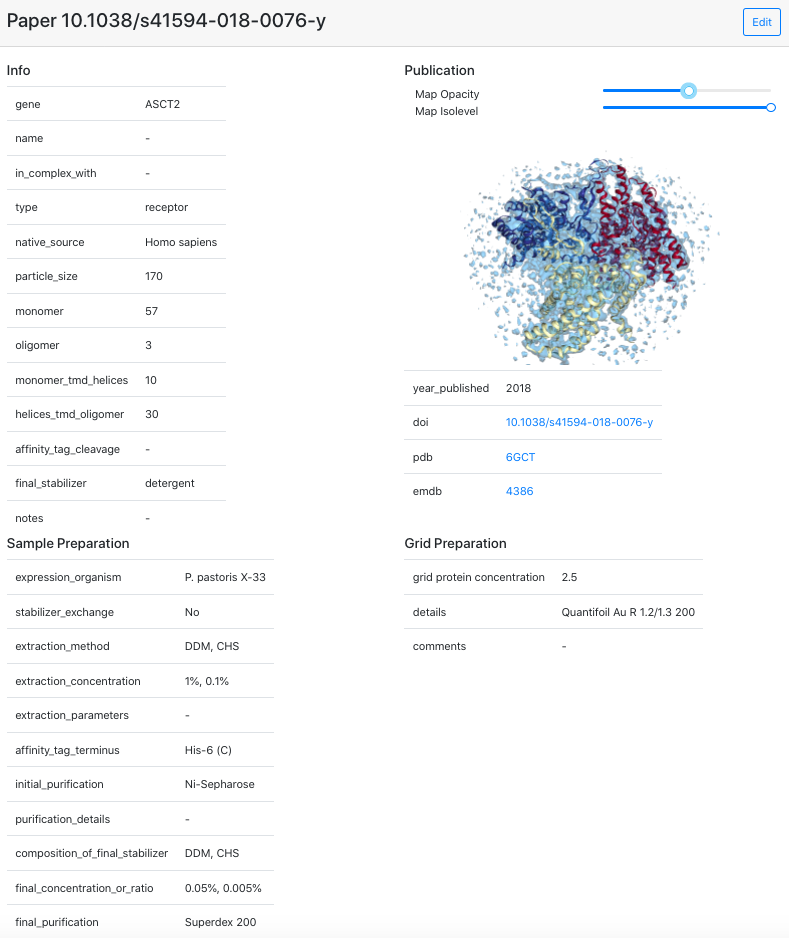BRILliant news! Our paper in collaboration with the Chris Garcia and Anthony Kossiakoff labs was just released in eLife Sciences Publications, Ltd. We present the monomeric apo(!) cryoEM structure of Frizzled5 (resolved part <40 kDa) by using a BRIL-fusion, Fab, Nb complex.
‘Structure of human Frizzled5 by fiducial-assisted cryo-EM supports a heterodimeric mechanism of canonical Wnt signaling.’.
We believe that this could be a general tool for small membrane protein targets. Our structure gives insights into the activation mechanism, which is initiated by binding of Wnt to the receptor. Various attempts to solve the Wnt/Fzd5 complex were unfortunately not ‘successful’.
Many congrats to everyone involved, first and foremost to my friend and colleague Naotaka Tsutsumi who lead the heroic effort of imaging such a small target.
The original description of this exciting Fab and Nb combination was recently published by the Kossiakoff lab member Somnath Mukherjee in Nature Communications: ‘Synthetic antibodies against BRIL as universal fiducial marks for single−particle cryoEM structure determination of membrane proteins.’.
I know that the world is quite literally burning, but I want to share some big news today: I will be joining the University of Southern California in Los Angeles as an Assistant Professor (starting Jan 2021) to expand our work on the structural biology of membrane proteins involved in neurobiology. We are hiring at all levels (PostDocs, Lab Manager, etc.), so please reach out!
USC Dornsife is in the process of building a new CryoEM facility (Krios-GIF-K3 + Glacios-Falcon4) with installation early 2021. In parallel, we’ll continue our efforts on LCP crystallography. Luxurious core facilities are available for protein expression.
I am particularly grateful that this was made possible despite a hiring freeze at USC. My heart goes out to all of our colleagues who were close to getting a job offer, to then getting the carpet pulled from underneath their feet, either by hiring freezes or visa randomness.
And… we’re live! Our manuscript is out in Nature: ‘Structural basis of the activation of a metabotropic GABA receptor’. A ‘movie’ of four GABA(B) heterodimer cryoEM structures along its activation pathway.
After our first unsuccessful attempts in 2017, Hamidreza Shaye (Cherezov lab) managed to purify a superb heterodimer sample. With that, we started with an agonist-bound state, which showed a mixture of (at least) two conformations (‘int-1’ and ‘int-2’).
In addition, we solved the ‘apo’ structure and the ‘active’ agonist/PAM bound state. This allowed us to assemble most of GABA(B)’s activation pathway, starting with the agonist in the GB1 ECD (blue), propagating through to the intracellular side of the GB2 TMDs (yellow).
Another exciting finding was the unexpected binding site of the PAM. We found a strong density at the dimer interface, which we confirmed by mutational studies (IP1 assays). It shows that PAMs can act like a glue, bridging the two subunits in the active conformation.
This was yet another fantastic collaboration with the Cherezov and Katritch labs and includes beautiful biochemistry from our colleagues in Montpellier around the one and only Jean-Philippe Pin.
We are excited to announce the launch of our cryo-recipes database: https://cryo-recipes.slac.stanford.edu, which is an assembly of parameters used for the structure determination of membrane proteins by cryoEM. We tried to capture everything from expression systems, biochemical purification conditions, over grid preparation, to imaging conditions and some image processing related numbers. It is currently unfortunately quite outdated, but we hope this is useful to the community, so please feel free to reach out for feedback or volunteer to submit some entries. The database is based on a github repository, so submission is welcome either via github or email.

We are very excited to share our new manuscript published today in Nature: ‘A mycobacterial ABC transporter mediates the uptake of hydrophilic compounds.’ Analogous to multidrug exporters, we describe the first promiscuous ABC transporter importer (with an exporter fold). Using single particle cryoEM, we identified an enormous cavity inside the transporter, which could explain this strange behavior. We propose that this unspecific import mechanism could be a general way for antibiotics to pass the membrane and get into bacteria.
Tuberculosis remains the most deadly infectious disease in the world and I hope this work contributes to the fight against it in some way. This has been yet another great collaboration with our colleagues Dirk Slotboom and Albert Guskov in Groningen. Also check out the back-to-back manuscript from the Seeger lab: ‘The ABC exporter IrtAB imports and reduces mycobacterial siderophore.’
